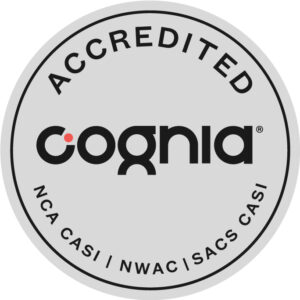
The image of teachers hunched over desks with piles of paper and a red pen is a recognizable image. However, some are calling for teachers and educators to move away from grades and into a more evaluative format. But why is there such a push for gradeless classrooms? Here are some of the benefits of a gradeless curriculum and some tips on how to give grades in a gradeless classroom.
Ironically, going gradeless doesn’t mean that there are no grades at the end of the semester. Instead what it means is that teachers no longer use the traditional grading rubric and instead use other means to evaluate the student’s effort. To do this, many educators will research new rubrics or grading methods, or even create their own.
A gradeless classroom shifts the focus from achieving a good grade to actual learning. Grades can create limits in regard to the true understanding of a subject since some curricula focus on memorization instead of meaningful education. Many educators believe that mastery of a subject is more valuable than a letter grade.
Using a different type of evaluative method is a great way to encourage struggling students. In addition, for high-achieving students, the amount of stress and pressure they feel is often reduced in a gradeless environment.
Plus, it offers more freedom to teachers. Overwhelmed educators often have too many assignments to grade, and it takes away from their class prep. This can lead to more shallow and unfulfilling lessons. This can lead to lessons that don’t go beyond the surface of the content. They lack discussion, inquiry, and student involvement in demonstrating their understanding through creative means.
Lastly, reducing the use of grades could help end grade inflation– an ongoing problem in high schools and colleges. However, there is a counterargument that a rise in grade inflation has also led to a rise in college completion rates.
The cons of shifting to a gradeless classroom are that grades are already a widely adopted practice. Letter grades are easy to understand and it’s easier to measure for college admissions. It’s also what parents are used to for evaluating their student’s success at school.
Not to mention, the concept of grades also provides inherent accountability. Students take ownership of their grades which can prompt them to work harder to receive that satisfactory letter.
Ultimately, a metric is necessary to measure a student’s success, even in a gradeless classroom. So to help you create your own, we compiled different methods on how to give grades in a gradeless classroom.
The intent of the single-point rubric is to eliminate the concept of grades and offer the opportunity for more personalized feedback. This gives students a better chance for self-assessment. However, some still find this design less meaningful in involving students in the assessment of why each criterion would be desirable.
Labor-based grading is a great alternative to traditional grading rubrics. Instead of stressing to students that they must ace one test at the end of the year or complete one paper with high marks, labor-based grading measures the actual time and work that students dedicate to a subject.
Instead of grading each assignment the teacher essentially evaluates the student’s involvement in each semester. The grades offer insight into how much effort and focus was put into the lesson and its assignments as a whole. Should a student neglect too many assignments then their grade shifts to an “I” for incomplete.
This further encourages students to focus on the process of learning and not simply the process of “writing a paper” or “memorizing for a test.”
If you’re struggling to find a specific grading criterion you like, try to create your own. In order to do so, you’ll need to first define your overall goal and your assessment type. What is the most important thing you want your students to learn by the end of the year? Do you prefer analytical or performative assessments? Or developmental rubrics that reflect your students’ level of subject understanding?
Once you determine your type of rubric, you will need to determine learning objectives and how you evaluate their work. Finally, establish detailed levels of mastery and revise when needed.
Renton Prep integrates a Competency Standard Assessment to evaluate our students. Our two-semester evaluations consist of teacher evaluations and student self-assessments.
The assessment scale descriptions are Exemplary (E), Mastery (M), Proficient (P), Developing (D), Unsatisfactory (U), and Insufficient (I) Competencies.
It measures growth and shows consistent and accurate proficiency on specific standards and learning objectives. When a student demonstrates proficiency, they have done everything required to accurately and completely show learning through a task.
We know that students demonstrate their knowledge in more than one way. One diagnostic system we utilize to help support student progress is called Edmentum. It provides us with content assessment in Math, English Language Arts, and Reading.
Students take this diagnostic multiple times each year to help the school measure and monitor their progress. This type of information also helps us to provide individualized learning and tiered intervention strategies.
Here at Renton Prep, we are always looking at how we can improve our students’ rate of success. We are dedicated to educating students in a supportive and academically challenging environment. For more information about Renton Prep or admissions, please contact us.
Apply for 2022-2023 enrollment today!

